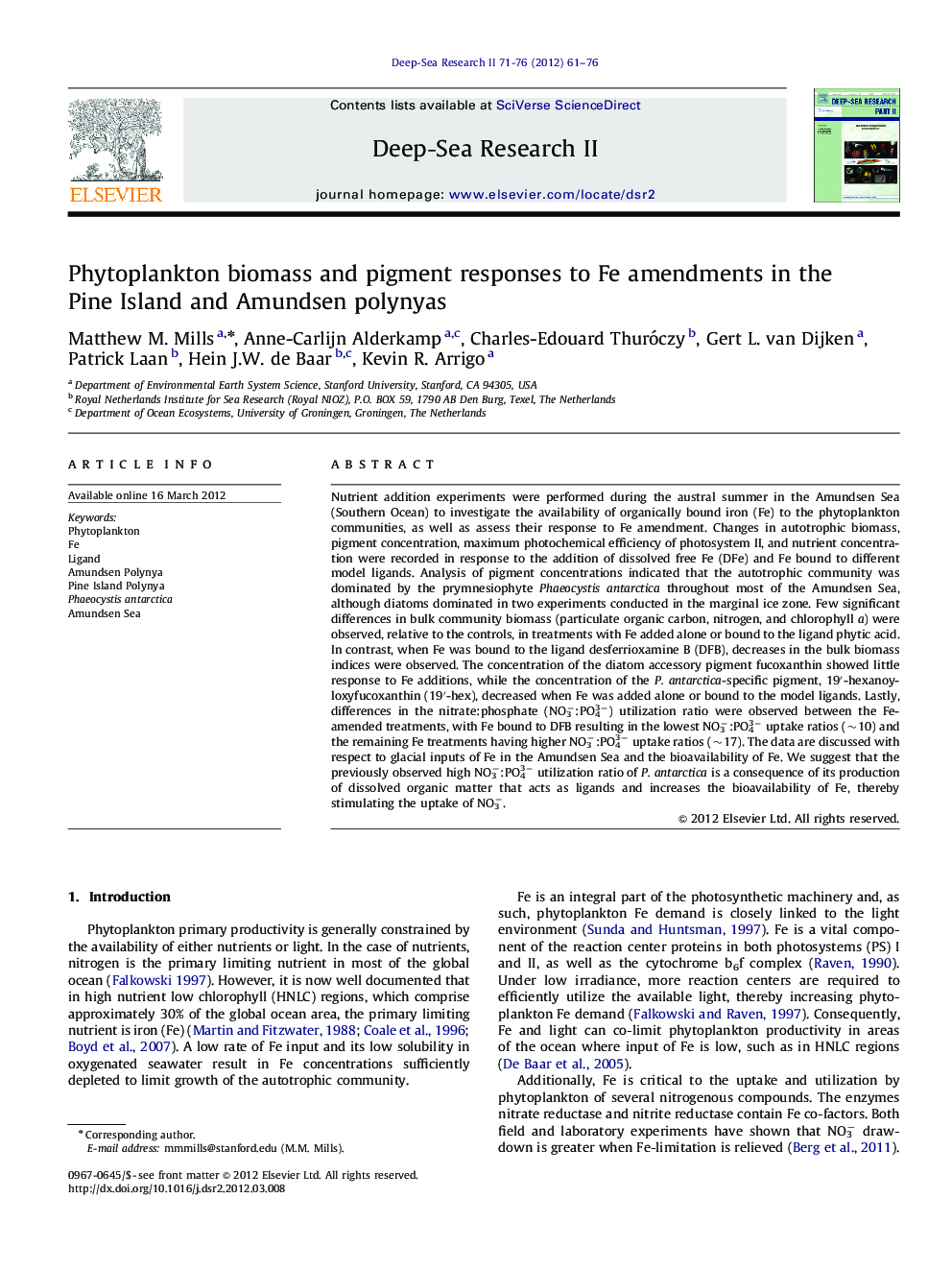| Article ID | Journal | Published Year | Pages | File Type |
|---|---|---|---|---|
| 4536758 | Deep Sea Research Part II: Topical Studies in Oceanography | 2012 | 16 Pages |
Nutrient addition experiments were performed during the austral summer in the Amundsen Sea (Southern Ocean) to investigate the availability of organically bound iron (Fe) to the phytoplankton communities, as well as assess their response to Fe amendment. Changes in autotrophic biomass, pigment concentration, maximum photochemical efficiency of photosystem II, and nutrient concentration were recorded in response to the addition of dissolved free Fe (DFe) and Fe bound to different model ligands. Analysis of pigment concentrations indicated that the autotrophic community was dominated by the prymnesiophyte Phaeocystis antarctica throughout most of the Amundsen Sea, although diatoms dominated in two experiments conducted in the marginal ice zone. Few significant differences in bulk community biomass (particulate organic carbon, nitrogen, and chlorophyll a) were observed, relative to the controls, in treatments with Fe added alone or bound to the ligand phytic acid. In contrast, when Fe was bound to the ligand desferrioxamine B (DFB), decreases in the bulk biomass indices were observed. The concentration of the diatom accessory pigment fucoxanthin showed little response to Fe additions, while the concentration of the P. antarctica-specific pigment, 19′-hexanoyloxyfucoxanthin (19′-hex), decreased when Fe was added alone or bound to the model ligands. Lastly, differences in the nitrate:phosphate (NO3−:PO43−) utilization ratio were observed between the Fe-amended treatments, with Fe bound to DFB resulting in the lowest NO3−:PO43− uptake ratios (∼10) and the remaining Fe treatments having higher NO3−:PO43− uptake ratios (∼17). The data are discussed with respect to glacial inputs of Fe in the Amundsen Sea and the bioavailability of Fe. We suggest that the previously observed high NO3−:PO43− utilization ratio of P. antarctica is a consequence of its production of dissolved organic matter that acts as ligands and increases the bioavailability of Fe, thereby stimulating the uptake of NO3−.
